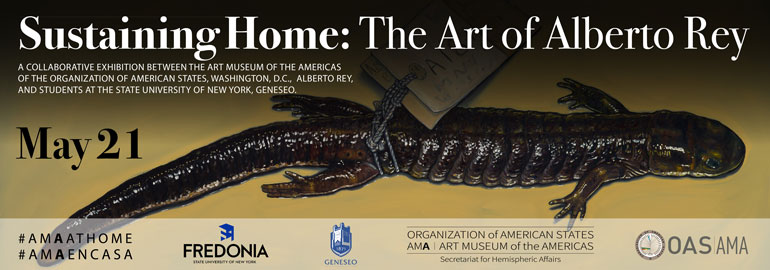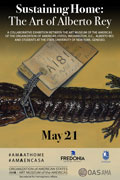
Adam Winum is a Junior at SUNY Geneseo majoring in Anthropology, with Minors in Art History and Museum Studies.
May 24, 2021
Transcendence of the Mundane: Alberto Rey’s Cuban Icon Series
by Adam Winum
We all wake up, begin our day, and move forward to greet the new sunrise that awakens us. Our routines may be similar or carry variations, depending on our individual lifestyles, which include nuances that are just as unique as ourselves. One detail that remains a constant among our lives is the human necessity for food. As we move and are challenged throughout the day, we must stop every now and then to eat. Much like our routines, there are different rituals we perform whilst we prepare and consume our meals. This action of eating may come across as one that is rather mundane or even expected of our day. However, our meals reveal much more about ourselves and all other humans than we typically think about. It is a core of the human experience. It is the aspect of how food forms identity that concerned Alberto Rey in the creation of his Cuban Icon Series (1993-1995), which focused on Cuban food and identity.
Our engagement with food is a constant throughout our lives and finds its way embedded into our memories. A dish may spark memories of our childhoods or maybe even a specific individual who spent their energy preparing it for us. The simple acts of preparing and exchanging food creates a level of cooperation with one another, which form necessary social bonds that create stronger relationships. Alberto Rey brings us closer to our attachment to culture through food in the monumental size he chose for his Cuban Icon Series. Among these works is Chicharrón, Ancel Guava Paste, Panetela Borracha, and Guarapo. Rey chose his medium and the size of these works with intention, as in increasing their size they increased in importance. By using nontraditional applications of plaster on a fresco-like support system, Rey transcended traditional oil painting to higher level of complexity in paint application. Thus, in size and medium, the works allude to Italian Renaissance fresco painting, thereby connecting Cuban food to history painting, making their connection to identity monumental.
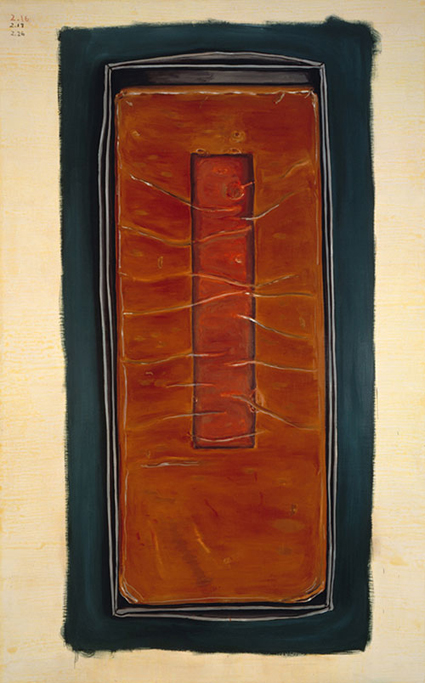
Cuban Icon Series: Ancel Guava Paste, 1993-1995, Oils on Plaster, 96 x 60 x 4", Collection of the Museum of Art, Fort Lauderdale, FL
Alberto Rey’s Cuban Icon Series specifically reveals the way in which food can provide meaning for identity. The choice of foods for depiction reflects the artist’s personal memories and background - this is most evident in his Ancel Guava Paste. Guava paste is derived from the abundance of guavas and sugar cane found in the Caribbean. The spread is almost jelly-like but retains its coagulated state, when it is rendered into bar form and shape. Being a versatile topping, guava paste can be used as a filling or even a spread. It is one of the many foods that is identifiable to Cuban culture. Attempting to seek a connection to the past, Rey presents to us Ancel Guava Paste in remembrance of Cuba - on the island and in the United States. This memory coincided with the memories of his father and uncle, who worked at the local Ancel factory that was only two blocks from the family’s home in Miami. The tastes and smells bring out distinct comforting memories that can touch any viewer.
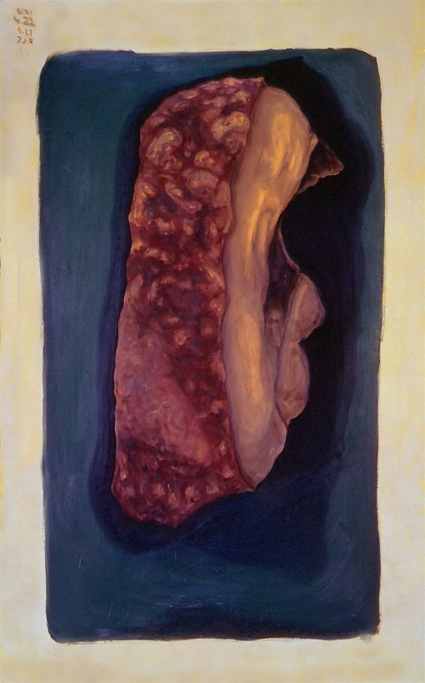
Cuban Icon Series: Chicharrón, 1993-1995, Oil on Plaster, 96 x 60 x 4″
Alberto Rey’s depiction of the fried, pork rind, Chicharrón, which is served as a snack to Cuban children and adults alike, stands out as an example of Cuban simplicity in comfort food. Chicharrónes are commonly served in a paper bag, when sold in stores. For Rey, his painting - Chicharrón - recalls childhood memories from a time when his mother would give him a bag of chicharrónes to keep him busy while she shopped, in Miami’s Little Havana. The monumental image Rey created from his memory will remind Cubans of chicharrónes by recalling, through its size and immediacy, the sensory appeal of the chicharrón and it will bring family memories to all Cubans, no matter where born. For non-Cubans, the painting is an introduction to one of Cuba’s typical foods.
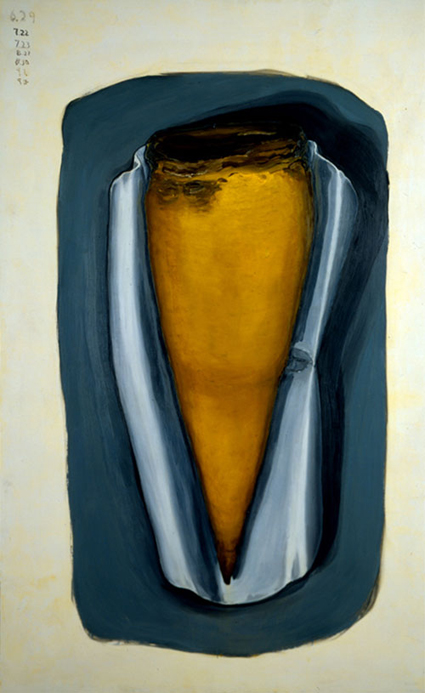
Cuban Icon Series: Panetela Borracha, 1993-1995, Oil on Plaster, 96 x 60 x 4″
Alberto Rey’s Panatela Borracha (Drunken Sponge Cake) captures the essence of this Cuban dessert, composed of a light cake steeped in simple syrup and, sometimes, rum. Its shape and color, for Cubans, stirs up clear memories of family gatherings, as it is served at such special occasions. In Rey’s painting, the rich dessert is brought to life in monumental scale. In its oil paint and plaster rendition, this image evokes a plethora of memories for everyone who grew up eating it or encounters it as an adult, with an ability to enable Cubans to connect to their associations for this dessert’s cultural connections. Such have only to close their eyes to be brought back to times of consumption of panetelas borrachas in order to let themselves fall to their physical senses. In looking at Rey’s Icon series, it is imperative to recognize the brilliant manner in which he depicted the precise foods that caused him to define and connect to his Cuban cultural identity, as he presented these markers of his childhood for all to enjoy.
Alberto Rey’s Cuban Icon Series generated a body of paintings linked to place and identity within Cuban culture, which is personal and cultural. All cultures have specific networks of association identifiable through food’s sensory appeal and food’s ability to evoke memories, which can be explained and shared with others. In a manner of speaking, we are all ambassadors to each other and representatives of our history and time. The experience of food awakened by specific tastes recalls specific memories, which can induce a feeling of home. For Alberto Rey, these highly held memories are embodied in this series of paintings of Cuban foods. They are set in plaster and painted large because they are not meant to be forgotten. Their creation is intended to raise our awareness of our gentlest memories of the heart and soul of the journey of life that begins with family memories. Icon Series acts as a hand, held outwards, grasping at an old connection. This connection is a trip to the past for some, the present defined for others and evocation of the future for all participants in time to come. Rey’s series asks everyone to search their identity for similar markers of place and to cherish them as part of their identity. The search for identity is not one that is certain or always easy and it can require time and perseverance for those who have become disconnected from their original culture. This path that continues and once someone begins to recover their identity with purpose, it is important to not be timid and to engage in the search so that we may obtain the same excellence as Alberto Rey achieved in tracing his original identity through his art.

